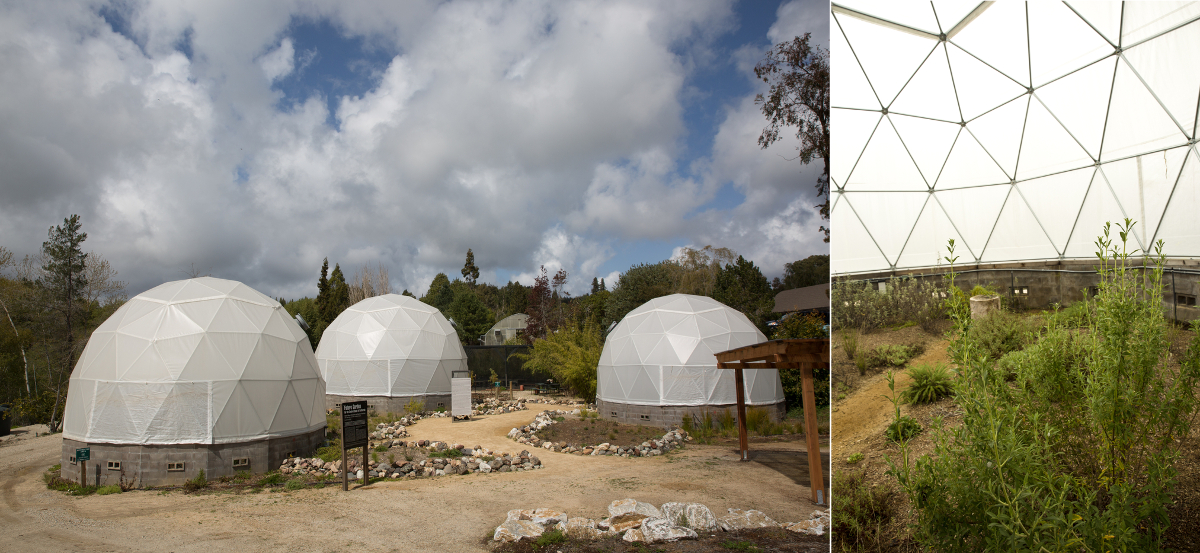The nature of eco-art

Walk past the beds of succulents and aromatic flowers at the UC Santa Cruz Arboretum and Botanic Garden and there sit three geodesic domes. Inside each, native plants grow in climatic conditions forecast for the near future. One is drier than the California Coast today, another is wetter, and one contains plants watered intermittently. UCSC ecologists closely monitor the plants to study how native species will respond to drastic climate change. However, scientists did not initiate this project—it sprung from the imagination of ecological artists.
The Future Garden for the Central Coast of California is one of the dozens of art installations created by world-renowned ecological artists Newton Harrison and his late wife Helen Mayer Harrison, professors emeriti in the UCSC Arts Division. What constitutes “eco-art” eludes precise definition, but to Newton Harrison, it’s art that inspires environmental stewardship and actively contributes to it. While the Harrisons designed Future Garden primarily to show people how unbridled climate change could diminish the natural biodiversity of California’s coast, it also serves as an experiment with a valuable scientific purpose: knowing which native plants can endure will help maintain important ecosystems as global temperatures increase.
“It’s the nature of artists to select subject matter they feel attuned to,” said Harrison. “We’re destabilizing all our natural systems, and it’s affecting everyone. Artists should be taking this on as subject matter.”
—Annie Roth

